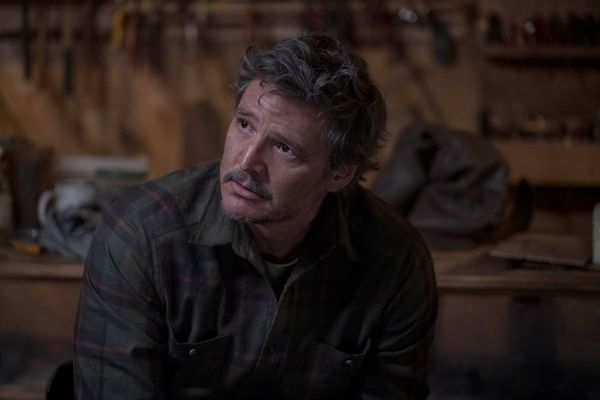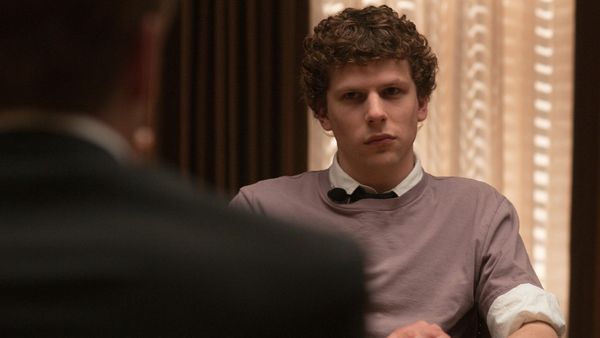The Matrix Ressurections and The Vandalised Past
The Matrix Resurrections is the perfect distillation of Baudrillard’s alleged critique of the first film: at long last, Resurrections is a one to one replica of Baurdrillard’s Desert of The Real and everyone resents it. Except me.
We find Thomas Anderson back on the old treadmill--the inevitable conclusion to the wheel of time rolling ever onward. Anderson suffers from dissociative episodes, having channeled his experiences as Neo into a series of successful video games called The Matrix: “Where better to bury truth than somewhere as ordinary as a video game” [1]. He consults his therapist regularly. After bumping into Tiffany, a woman with striking resemblance to Trinity from his games, Anderson stops taking the blue bills: his quote unquote medication.
Smith, the colossal hair-gel corporate douche-bro, demands another Matrix game be made, but Anderson doesn’t have the juice or the inclination. Making another would be a tired, heartless exercise. And so where the first trilogy positioned the film against our reality, and the Desert of The Real against the Matrix: the new film positions itself against the previous trilogy, which is positioned against IO, which is positioned against the new Matrix.
In this way the story untethers from our reality and becomes Baudrillard’s supposed hyperreality. The only vector in the film is what can be synthesised from the previous films: and not even that, against the pictures proposed as video games diegetically. A copy of a copy of a refraction, caught out of the corner of the eye when passing a mirror in the small hours before dawn. You can’t quite say why but everything looks just a little bit wrong, doesn’t it?
Neo’s true past stutters into view: single moments of almost recognition. Trinity’s face. Agent Smith’s interrogation. Old faces, memories decayed and decaying. The worst is that when Neo feels something is amiss, the world is constructed to dismiss his concerns. No one will engage with him critically, save his Analyst: the new architect of this Matrix, exploiting humanity’s suffering for energy. There’s a certain “kids are on their phones a lot” attitude the story develops that isn’t entirely wrong. The Analyst’s Matrix is the world of smartphones and social media. Buzzwords and acronyms. No one at Neo’s office talks like a person: they vocalise text messages and reddit threads. And the second you step a toe out of line, the swarm descends: cancelling your very existence or worse, renders you an exile, a relic of the past howling through gritted fang about how things used to be better to a vacant audience.
If the social is predicated on its exclusions, in Ressurections this new Matrix is about holding your attention long enough to make you suffer. This, the Analyst explains, produces more energy. More profit for the machines. It’s only unplugged that Neo experiences this… silence.
Where the original trilogy concerns itself with the creeping destruction at the hands of late-stage Capitalism and the gradual turn toward conservative consumerism as the dominate social mechanism, this reincarnation is forced to contend with the calcification of these problems in modernity: the obliteration of meaning into the superreality of social media. The endless cycle of disagreements, sensationalization and iteration on the new Matrix game development is what eventually pushed Neo off the literal edge. The feeling of being the only real person in a world of machines, wires hissing behind their eyeballs. “Then, over time, they drop little hints that they're not real. They say things that aren't true. They throw little sparks, repeat themselves... There's a cylinder inside them with a pattern of bumps that make music, you're keeping them alive by winding them” [2]. And then you meet another person and it all becomes so simple: this is true. This other person isn’t one of them, they are real.
This raises the core, inevitable concern of the film and frankly life itself: why does it exist? Why do more? The temptation to reduce the motivation to money, while true, fails to appreciate the magnitude of what’s happening. Objects produce and exert pressure on us just as ideology: that Warner Brothers own The Matrix puts a kind of structural momentum onto the company. One that is always there, the kind of mild headache that comes and goes until one day it matriculates into a migraine and you’ve no choice but to do something about it already.
While slowly losing his grip on the real, Neo is ripped from this new Matrix, only to learn that after his death things did not magically fall back into place. The crew of The Mnemosyne argue with Niobi, insisting they free Trinity, to no avail. And so another repeated cycle begins. Words ring on deaf ears and Neo rebels.
In some ways Resurrections is less about the world saving acts of insurrection, but rather, the small rebellions of the heart. Neo refusing to make a Matrix sequel. Smith naming Warner Bros. as the motivation behind this project. Trinity pursuing her passion for motorcycles. Niobi giving in to nostalgia. Most astonishing is that such victories amount to very little of interest. The film goes on, at moments, feeling like that is because it is a film. There’s some immaterial, slippery, not-quite-real faith that is not present in the story.
As a godless teenager I attended Catholic school for a short time. One Christian Brother refused to engage with me because he knew I’d never believe, not even in the contemporary sense. I’ll just never get it, so why waste his time explaining, he told me. He did the opposite of respecting me, and so I started taking communion for the remaining two masses before I went back to reality. I’ll never forget the power his rejection held over me and still does. The lack of pathos is toe curling. I live in envy of such damage. That very same knife-blade disregard Resurrections has for the faithful.
In the end, what remains of the film’s many allegories and references is the connection between Neo and Bugs, Neo and Trinity, Neo and Morpheus, Bugs and her crew. If the film supposes that social media is devouring our every reality for profit, then the solution is connection. Community. Trust. Love. The feeling of a hand closing around yours. The warmth of being pulled into an embrace, arms locked around each other. These same questions that run through the first three Matrix stories are here, but like everything else, they look different. Feel slightly off. Nothing can quite overcome the orbital velocity of the original trilogy. And so we’re left, drifting in the dark, circling what was, and what could’ve been.
Sources
[1] The Matrix: Ressurections (2003). Lana Wachowski. Distributed by Warner Bros. Pictures, Village Roadshow Pictures
[2] You’ll Be Perfect When You’re Dead: The Collected Online Writings of Dan Harmon (2013). Dan Harmon.
Additional Resources (video version, in order):
Video by Nino Souza from Pexels: https://www.pexels.com/video/a-person-live-streaming-a-religious-event-2928284/
Video by Yan Krukau from Pexels: https://www.pexels.com/video/students-raising-hands-in-class-8198505/
Video by RDNE Stock project from Pexels: https://www.pexels.com/video/a-teacher-talking-to-a-student-on-campus-8419361/
Video by MART PRODUCTION from Pexels: https://www.pexels.com/video/catholic-mass-7219038/
Music (video version, in order):
Factory Fight - Johnny Klimek & Tom Tykwe
Elia Azarzar - The Road to Valhalla



